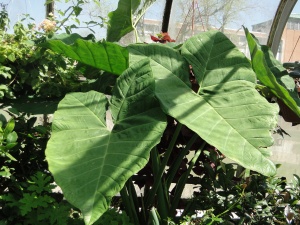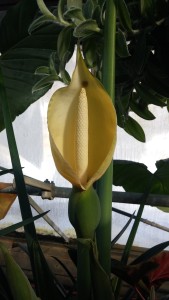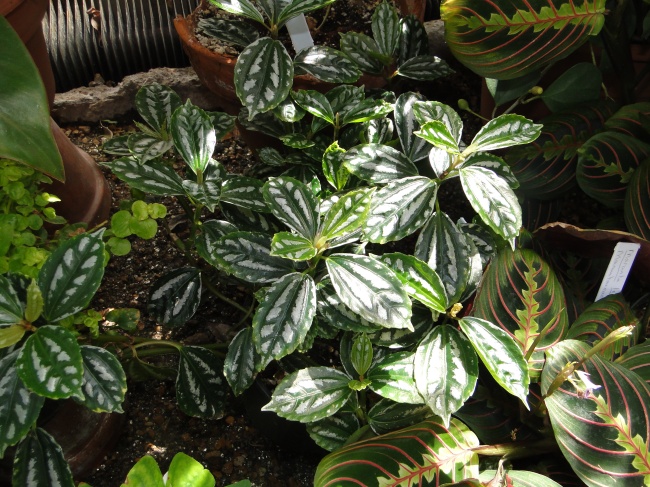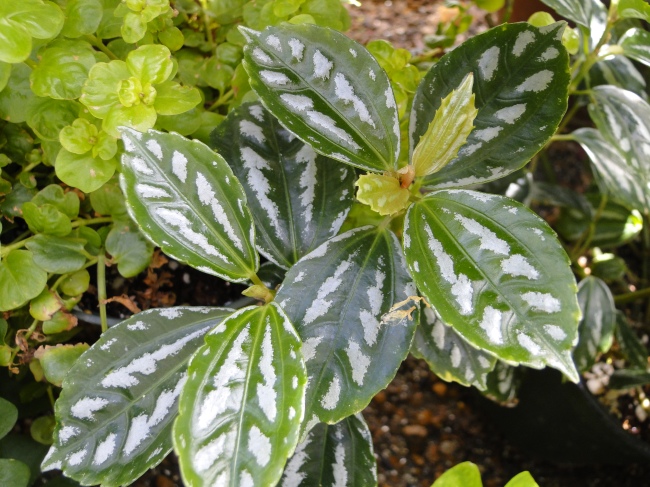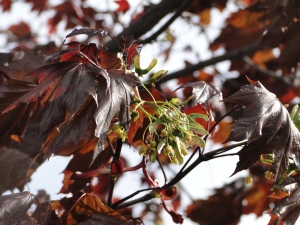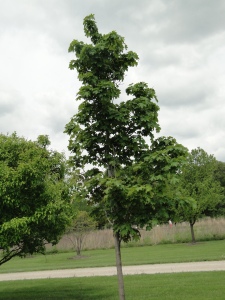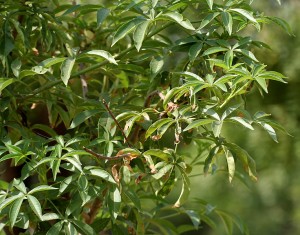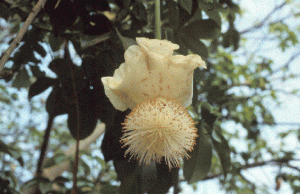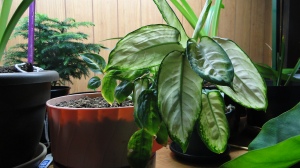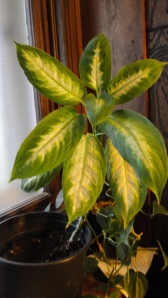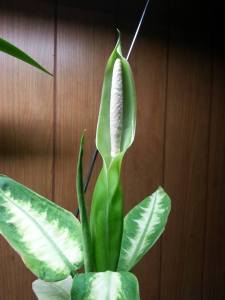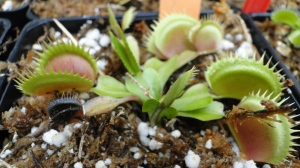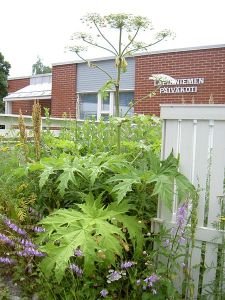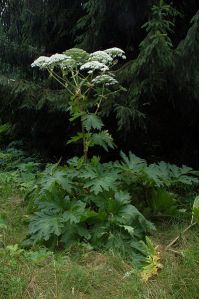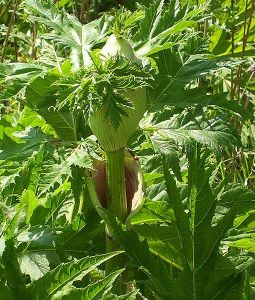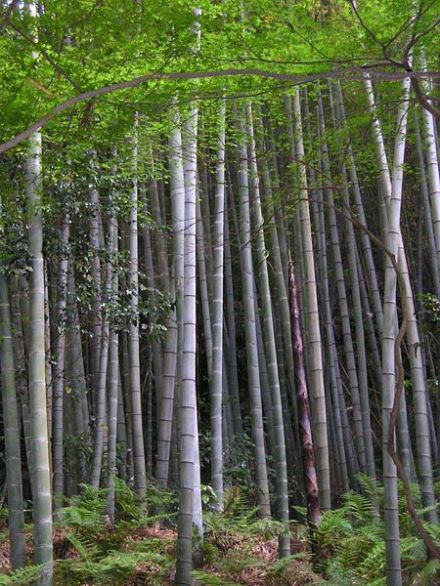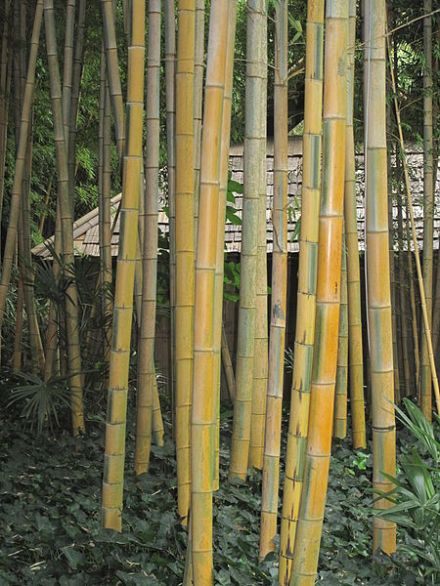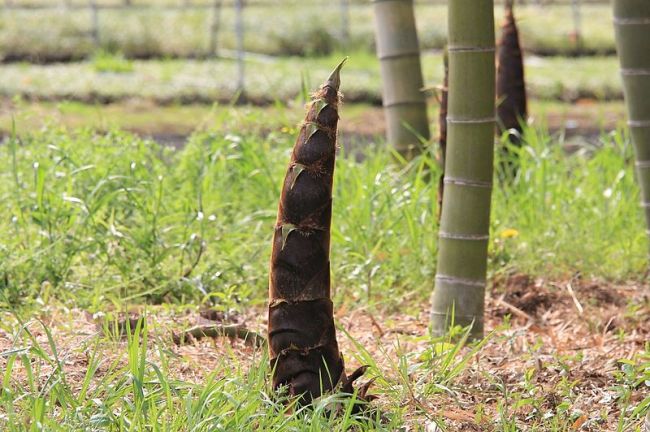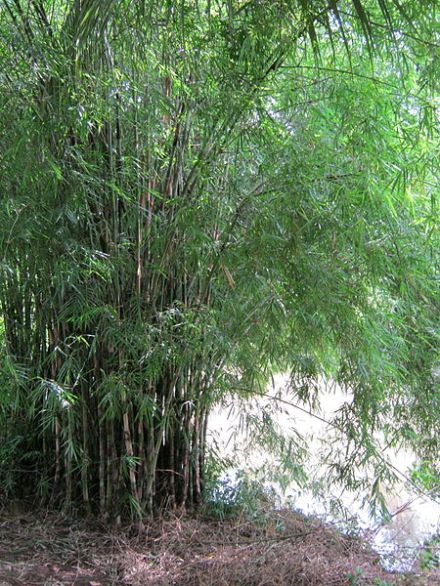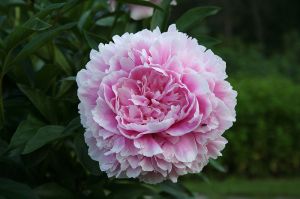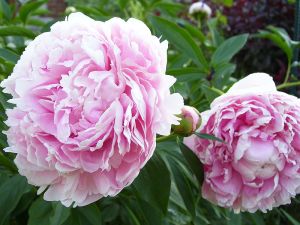With leaves up to 6 feet long by 6 feet wide, P. pacifica is a slow-growing palm up to 30 feet tall. These do best in full-sun with mostly moist, well-drained soils.
Pritchardia pacifica (Fiji palm, Saii)
Deciduous: no
Hardiness Zones: 10-11
Height: 6-9 meters (20-30 feet) tall
Diameter: 3.5-5.5 meters (12-18 feet) across
Growth Rate: slow
Age: not sufficiently researched
Root System: shallow (typical of palm trees)
Family: Arecaceae
Subspecies: var. ‘marquisensis’, var. ‘pacifica’, var. ‘samoensis’
Tolerates: warm, humid environments
Problems (major): Lethal yellowing is fatal – yellows leaves, blackens flowers, premature fruit drops
Problems (minor): few minor problems
Poisonous: believed to be non-toxic to animals
Soil requirements: prefers moist, well-drained soils
Air Requirements: Temperatures under 60 degrees Fahrenheit will damage these; temperatures near freezing are lethal.
Watering requirement: moderate
Sun requirement: full sun or part-shade
Needles: none
Cones (male): none
Cones (female): none
Leaves: Enormous, up to 6 feet long by 6 feet wide, lime green, fan-shaped, palmate, up to 90 sections per leaf
Flowers: Blooms July-August in large clusters up to three feet long with brown flowers (3 petals and 3 sepals), sprouts anywhere from 1 to 4 inflorescences at a time
Fruits: dark brown or black, up to 1 centimere (1/2 inch) in diameter
Seeds require stratification: no
Monoecious or Dioecious: monoecious
Notable characteristics:
The leaves are enormous, sometimes surpassing 30 cubic feet.
Uses:
P. pacifica are typically grown as an ornamental for its colossal leaves.
Sources used:
- http://www.tropicos.org/Name/2401372
- http://www.tropicos.org/NameSearch.aspx?name=Pritchardia+pacifica
- http://www.palms.org/palmsjournal/2003/vol47n2p107-109.pdf
- http://www.missouribotanicalgarden.org/PlantFinder/PlantFinderDetails.aspx?taxonid=276715&isprofile=1&basic=palm
- http://ntbg.org/plants/plant_details.php?plantid=11899
- http://archive.org/stream/ornamentaltreeso00rock/ornamentaltreeso00rock_djvu.txt
- http://eunops.org/content/glossary-palm-terms
- http://www.ctahr.hawaii.edu/forestry/trees/CommonTreesHI/CFT_Pritchardia_spp.pdf
- http://www.botany.hawaii.edu/faculty/daehler/wra/full/Pritchardia%20pacifica%20SA.xls

The colossal leaves of P. pacifica behind another palm (for size comparison)
The image was taken by me during December 2012. It may be used for informational or educational purposes only, and this online journal must be appropriately cited/referenced before use is allowed.


